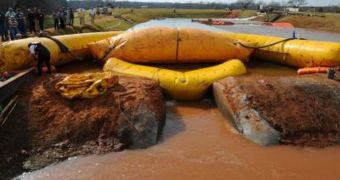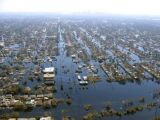Hurricane Katrina (2005), one of the largest natural disasters in the history of the United States, is still a fresh memory in the minds of New Orleans residents, and of citizens across the country. The unimaginable extent of the damages caused by the floods left authorities at the time wondering where to start rescue operations from. All the water came into the city through broken levees, whose flows could not be contained. Now, experts at the Department of Homeland Security (DHS) Science & Technology Directorate are working to ensure this doesn't happen again.
In charge of the research is scientist Will Laska, who is currently developing a technology known simply as PLUG, for Portable Lightweight Ubiquitous Gasket. He says that the key element in all response systems designed to counteract the devastating effects of broken levees should be mobility. Fast deployment also ranks high on the list, he adds, as the system would have to be lightweight enough to be carried by helicopter to where it is needed. In his research, Laska sought the help of industry experts, academia, and government agencies, in order to meet this challenge.
Innovative technologies from all these parties were employed in the PLUG. What the expert was aiming for was a system that could also be deployed in cases where the breach was so large that it could not be covered with existing construction materials. “The thing is, there's an effective structural material that's readily available during floods – water,” the expert says. He analyzed four proposed technologies that met his requirements, but only one managed to pass all the tests – the PLUG, which was developed by the US Army Corps of Engineers (ACE) Engineering Research and Development Center, in Vicksburg, Mississippi.
The new system underwent testing at a US Department of Agriculture (USDA) Research Service site. The experiments were carried out at the Hydraulic Engineering Research Unit in Stillwater, Oklahoma, which is at this point the only facility in the United States capable of providing the necessary simulation conditions. The compound can deliver water flows in excess of 125 cubic feet per second, and sustain these flows for several minutes.

 14 DAY TRIAL //
14 DAY TRIAL // 
